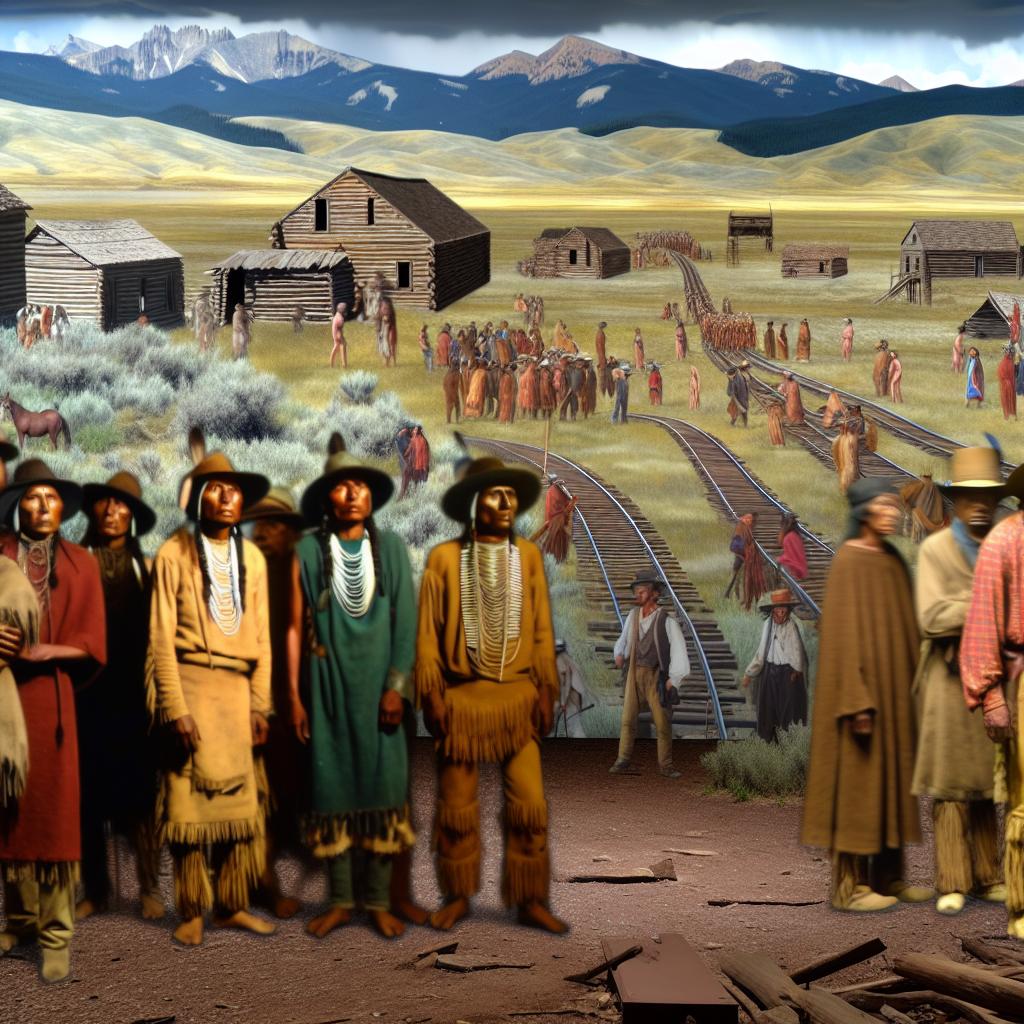The Era of Westward Expansion
The period of Westward Expansion in the United States, primarily during the 19th century, was a time of tremendous growth and transformation. This era saw the nation’s physical boundaries extend from the Atlantic to the Pacific Ocean, in alignment with the ideology of “Manifest Destiny.” This belief held that it was the nation’s preordained right, even responsibility, to expand its territory across the entire North American continent. However, this growth was fraught with challenges and consequences, particularly for the Native American tribes whose ancestral lands were at stake.
Government Policies and Land Acquisition
During this transformative period, the U.S. government initiated a series of legislative actions aimed at facilitating westward expansion. An indispensable ideology, *Manifest Destiny* provided a moral and political rationale for these actions. Prominent among these was the Indian Removal Act of 1830. This act authorized the forced removal of Native American tribes from their native lands, relocating them to areas west of the Mississippi River. This undertaking resulted in the infamous Trail of Tears, during which thousands of Native Americans endured harsh conditions and significant loss of life while being uprooted and relocated.
The U.S. government entered into numerous treaties with Native American tribes, though these agreements often favored the interests of settlers and governmental priorities. Many treaties were subsequently violated or manipulated to further facilitate the acquisition of land by European-American settlers. This approach allowed the government to cede native lands under dubious legal and ethical grounds, often providing inadequate compensation or failing to fulfill the promises made to indigenous communities.
Impact on Native American Tribes
The impact of westward expansion on Native American tribes was extensive and detrimental. The process of land acquisition involved the systematic displacement of many tribes from their ancestral homelands. This displacement not only led to the physical removal from lands with spiritual and cultural significance but also resulted in a profound loss of cultural heritage. Tribes such as the Cherokee, Sioux, and Nez Perce suffered substantial disruptions to their traditional ways of life.
The influx of European settlers brought with it a host of new diseases to which Native Americans had no immunity. The consequences were dire, with entire communities being decimated by smallpox, measles, and other infectious diseases. Population losses were catastrophic, exacerbating the challenges of warfare and displacement, and all contributing to a sharp decline in the Native American population.
Cultural and Societal Changes
The transition to life on reservations brought enormous societal challenges for Native American tribes. These new lands were often unfamiliar and provided resources that were insufficient to sustain traditional lifestyles and economic practices. The reservation system, by design, aimed to assimilate Indigenous peoples into European-American culture and lifestyle. This policy of assimilation was further enforced through measures such as the establishment of boarding schools that sought to educate Native American children in European-American ways. These schools often employed severe methods, working to dismantle indigenous languages, cultural practices, and identities.
This cultural suppression had long-lasting adverse effects on tribal societies. Traditional governance structures, social formations, and cultural expressions faced severe restrictions, leaving many tribes with the difficult task of preserving their identity amidst an imposed cultural overhaul.
Long-term Consequences
The legacy of westward expansion continues to leave a profound mark on Native American communities. The loss of their ancestral lands had significant and lasting economic implications. Many Native American tribes still grapple with socioeconomic challenges that stem from historical displacement and disenfranchisement. These include limited access to education, healthcare, and economic opportunities, disparities further compounded by lingering stereotypes and systemic inequalities.
Preserving cultural identity has required sustained effort from Native American communities. Many tribes endeavor to revitalize and celebrate their rich heritages, leveraging both traditional and modern resources. Efforts to reclaim indigeneity can be seen in language preservation projects, cultural festivals, and the legal pursuit of land rights.
For a deeper exploration of the historical movements and policies impacting Native tribes, resources from the National Museum of the American Indian offer comprehensive information and valuable insights into the complex dynamics of Native American history and cultural preservation today.
In critically evaluating this period of history, it is essential to engage with the lived experiences and perspectives of Native American tribes. Their resilience amidst adversity continues to influence and contribute to the cultural and historical narrative of the United States. Understanding these multifaceted stories not only provides a more holistic view of American history but also recognizes the enduring legacy of native resilience and cultural vitality in shaping the nation’s identity.

